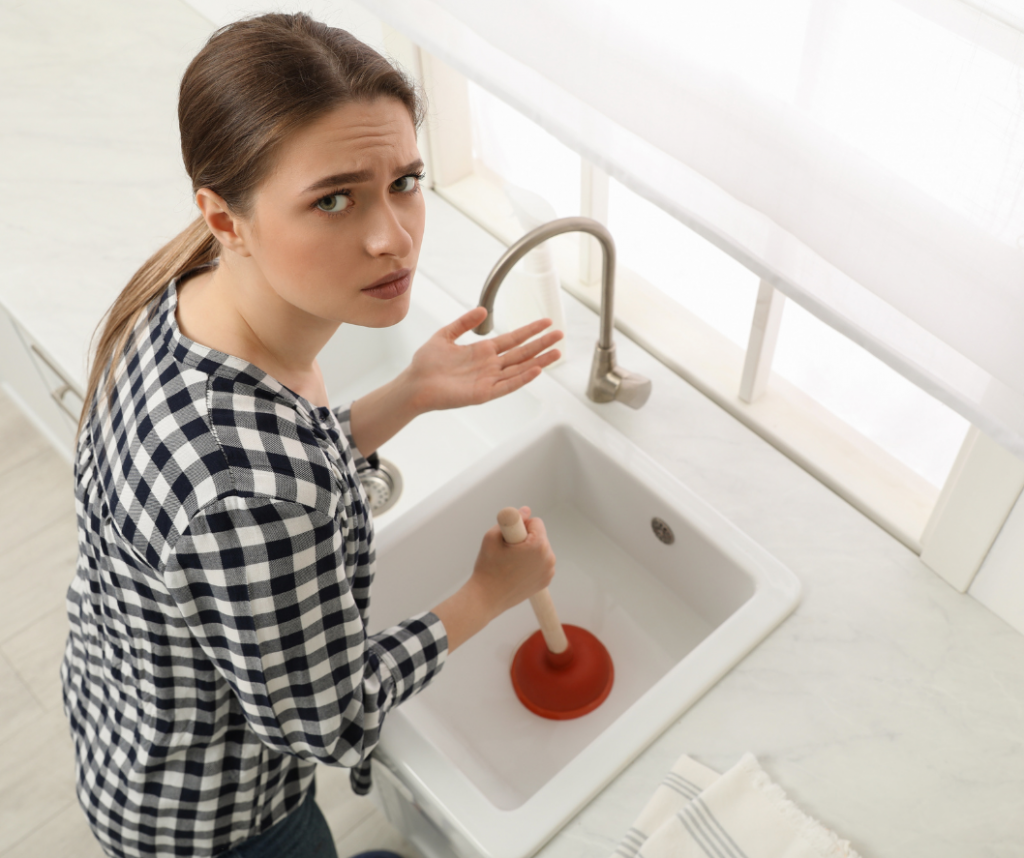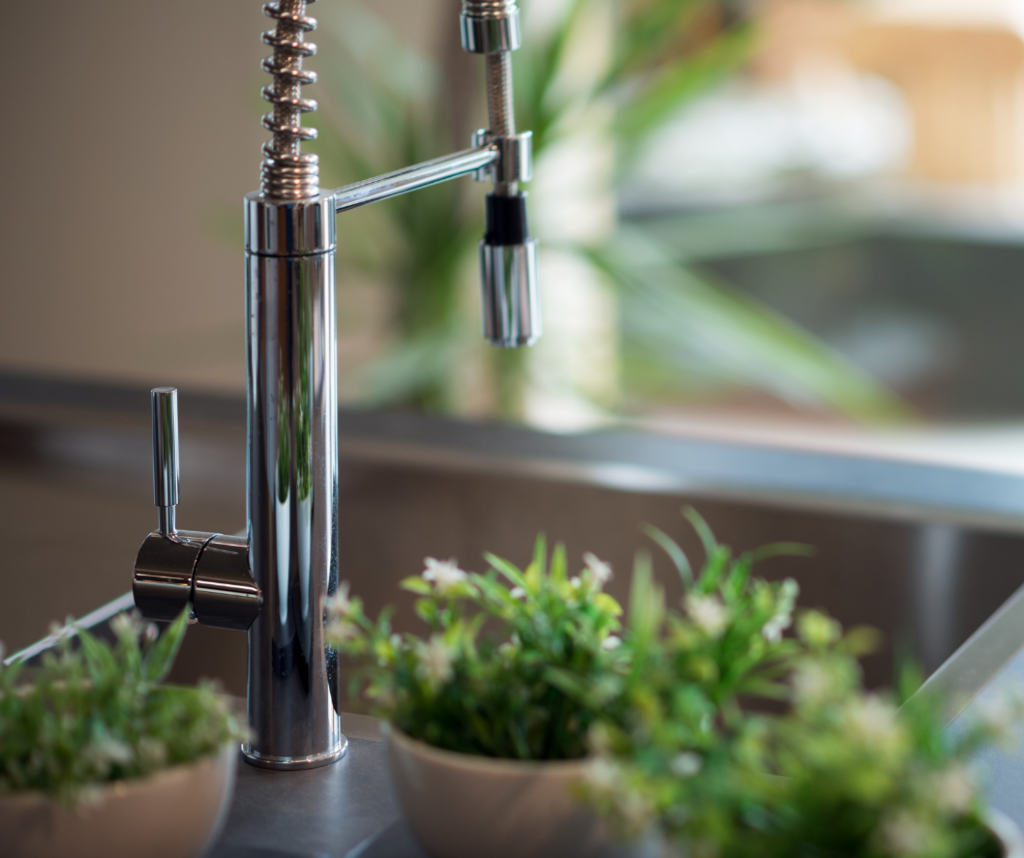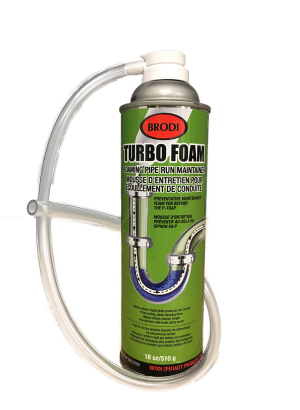Have you ever noticed a foul smell coming from your kitchen sink? If so, you are not alone. Many people struggle with smelly drains that can ruin the ambiance of their kitchen and make cooking and cleaning unpleasant. A smelly drain can also pose health risks, as it can attract pests, spread germs, and cause allergies or infections. Therefore, it is important to address the issue as soon as possible and prevent it from recurring.

In this blog, we will help you understand the causes of a smelly drain and provide you with some effective solutions to get rid of it. We will also share some preventive measures to keep your kitchen sink fresh and inviting. By following these tips, you can enjoy a clean and odor-free kitchen that will make your life easier and happier.
Understanding the Causes of a Smelly Drain in Kitchen Sink
A smelly drain is not only a nuisance, but also a potential health hazard. A smelly drain can indicate that there is something wrong with your plumbing system, such as a clog, a leak, or a sewer backup. These problems can lead to water damage, mold growth, and structural issues in your home. They can also cause wastewater to overflow into your sink, contaminating your dishes, utensils, and food. This can expose you and your family to harmful bacteria, viruses, parasites, and chemicals that can cause diseases such as diarrhea, typhoid, hepatitis, and cholera.
Moreover, a smelly drain can affect your mood and well-being. A smelly drain can create a foul and unpleasant atmosphere in your kitchen, which can make you feel disgusted, stressed, or depressed. A smelly drain can also interfere with your sense of smell and taste, affecting your appetite and enjoyment of food. A smelly drain can also lower your self-esteem and confidence, as it can make you feel embarrassed or ashamed of your home. A smelly drain can also deter your guests from visiting your home, affecting your social life and relationships.
Therefore, it is important to address the issue of a smelly drain as soon as you notice it and prevent it from worsening. By doing so, you can protect your health, your home, and your happiness.
There are several possible causes of a smelly drain in your kitchen sink, such as:
Accumulated Food Residue:
Leftover food particles can accumulate in the drain and cause foul smells.
Grease and Fat Buildup:
The kitchen sink is often a landing spot for greasy dishes. Over time, grease and fat deposits can accumulate in the drain, creating a breeding ground for bacteria and contributing to foul smells.
Bacterial Growth:
The damp and dark environment inside the drain is an ideal breeding ground for bacteria. The decomposition of organic matter in the drain can lead to the production of sulfurous compounds, causing the characteristic foul odor.
Step-by-Step Solutions for a Fresh-Smelling Kitchen Sink
Now that you know the causes of a smelly drain, let’s look at some of the solutions to get rid of it. Here are some of the methods that you can try at home using simple and natural ingredients that you may already have in your kitchen.

Hot Water Flush and Baking Soda-Vinegar Treatment
One of the simplest and most effective ways to get rid of a smelly drain in the kitchen sink is to use a combination of hot water, baking soda, and vinegar. This method can help remove grease, food particles, and bacteria that cause bad odors in your drain. Here is the proper procedure to follow:
• Boil a large pot of water and pour it down the drain. This can help loosen and flush away any clogs or debris in the pipe.
• Sprinkle half a cup of baking soda into the drain and let it sit for a few minutes. Baking soda is a natural deodorizer that can absorb and neutralize odors.
• Pour one cup of white vinegar into the drain and cover it with a drain plug or a wet cloth. Vinegar is a natural acid that can react with baking soda and create a fizzing action that can dislodge and dissolve any remaining gunk in the drain.
• Wait for 15 to 20 minutes and then pour another pot of boiling water down the drain. This can help rinse and clear the drain of any residue or bubbles.
You can repeat this treatment once a month or as needed to keep your drain fresh and clean. However, if you have a garbage disposal in your sink, you may want to avoid using vinegar as it can corrode the metal parts over time. Instead, you can use lemon juice or citric acid as a substitute.
Duration and Frequency
This treatment can take about 30 to 40 minutes to complete, depending on how much water you need to boil and how long you wait for the reaction to take place. You can do this treatment once a month or as needed, depending on how often you use your sink and how smelly your drain is. You can also do this treatment as a preventive measure to prevent odors from building up in your drain.
Citrus Power
Another way to get rid of the smelly drain in your kitchen sink is to use the power of citrus fruits, such as lemons, oranges, grapefruits, or limes. Citrus fruits contain citric acid, which can help break down grease and fat in your pipe. They also contain natural oils, which can help freshen up your drain with a pleasant and refreshing scent. Here are some effective ways to use citrus fruits for your drain:
• Cut a lemon or an orange in half and squeeze the juice into the drain. You can also rub the peel on the drain opening to release the oils. This can help clean and deodorize your drain with a citrusy smell.
• Cut a grapefruit or a lime in half and sprinkle some salt on the flesh. Then, rub the salted fruit on the drain opening and inside the pipe. This can help scrub and disinfect your drain with a tangy smell.
• Peel and chop some citrus fruits of your choice and put them in a blender. Add some water and blend until smooth. Then, pour the mixture into the drain and let it sit for a few minutes. This can help flush and sanitize your drain with a fruity smell.
You can use any citrus fruit that you like or have available for this method. You can also mix and match different fruits to create your own custom scent for your drain.
Deep Cleaning with Turbo Foam:
An easier method to get rid of the smelly drain in your kitchen sink is to use turbo foam, which is a foaming drain maintainer that can help dissolve and remove grease, fat, and food residue from your pipe. Turbo foam can also help eliminate bacteria and odors from your drain and prevent clogs and backups. Here is how to use turbo foam for your drain:
• Shake the can well before use and remove the cap. Attach the nozzle to the can and insert it into the drain opening. Make sure the nozzle is firmly in place and pointing down the drain.

• Press the button and release a generous amount of foam into the drain. The foam will expand and fill the pipe, reaching and cleaning the hard-to-reach areas. You will hear a hissing sound as the foam works its way down the drain.
• Wait for 15 to 20 minutes and then flush the drain with hot water. The foam will dissolve and wash away any grease, fat, food, and bacteria from the pipe, leaving it clean and odor-free.
You can use turbo foam once a week or as needed to keep your drain in good condition. You can also use turbo foam as a preventive measure to prevent grease and fat buildup in your drain.
Targeting Stubborn Debris
You can use turbo foam to target any stubborn debris that is causing your drain to smell. You can also use turbo foam to prevent any future problems with your drain, such as clogs, backups, or overflows.
Turbo foam is safe and effective for all types of pipes, including plastic, metal, and ceramic. Turbo foam is also eco-friendly and biodegradable, as it does not contain any harsh chemicals or solvents that can damage your pipes or harm the environment. You can learn more about turbo foam and other Brodi products by checking out the rest of our website.
Regular Maintenance with Baking Soda
Another method to get rid of smelly drain in the kitchen sink is to use baking soda as a regular maintenance product. Baking soda is a natural and inexpensive ingredient that can help keep your drain clean and odor-free. Here is how to establish a routine with baking soda for your drain:
• Every night before you go to bed, sprinkle a quarter cup of baking soda into the drain and let it sit overnight. This can help absorb and neutralize any odors that may develop in your pipe.
• Every morning when you wake up, run some hot water down the drain to flush the baking soda and any dirt or debris that it may have collected.
• Once a week, add some vinegar to the baking soda and let it fizz for a few minutes. This can help enhance the cleaning and deodorizing effect of the baking soda and remove any stubborn gunk from the pipe.
You can use this routine with baking soda to keep your drain in good shape and prevent any smelly problems from occurring. You can also adjust the amount and frequency of baking soda and vinegar according to your needs and preferences.
Check and Repair Leaks
Another method to get rid of smelly drain in your kitchen sink is to check and repair any leaks that may be present in your plumbing system. Leaks can cause water to seep out of your pipe and into your walls, floors, or cabinets, creating a moist and dark environment that can foster bacterial and mold growth. Leaks can also cause sewer gas to leak out of your pipe and into your kitchen, creating a foul and toxic smell that can harm your health and well-being. Here is how to check and repair leaks for your drain:
• Inspect your pipe and fittings for any signs of leaks, such as cracks, holes, rust, corrosion, or moisture. You can also use a flashlight or a mirror to look for any hidden or hard-to-see leaks in your pipe.
• If you find any leaks, mark them with a tape or a marker and turn off the water supply to your sink. You may need to use a wrench or a plier to loosen or tighten any nuts or bolts that may be causing the leaks.
• Depending on the type and severity of the leaks, you may need to use different methods to repair them, such as:
• Applying plumber’s tape, epoxy, or sealant to the leaky area and letting it dry. This can help seal and waterproof the leaky area and prevent water or gas from escaping.
• Replacing the leaky pipe or fitting with a new one that is compatible and suitable for your plumbing system. This can help restore and improve the function and performance of your pipe and prevent further leaks or damage.
• Calling a professional plumber to fix the leak for you. This can help ensure a safe and proper repair of the leak and prevent any complications or risks that may arise from a DIY repair.
You can check and repair leaks for your drain as soon as you notice them or as part of a regular maintenance schedule. You can also prevent leaks from occurring by using quality pipes and fittings and avoiding any excessive pressure or force on your pipe.
Importance of Leak Inspection
Checking and repairing leaks for your drain can have many benefits, such as:
• It can help prevent water damage and mold growth in your home, as it can stop water from seeping out of your pipe and into your walls, floors, or cabinets, creating a moist and dark environment that can foster bacterial and mold growth.
• It can help prevent sewer gas exposure and odor in your kitchen, as it can stop sewer gas from leaking out of your pipe and into your kitchen, creating a foul and toxic smell that can harm your health and well-being.
• It can help prevent water waste and high water bills, as it can stop water from dripping or flowing out of your pipe and into your drain, wasting water and increasing your water consumption and cost.
• It can help prevent plumbing problems and emergencies, as it can stop leaks from worsening or spreading and causing more damage or disruption to your plumbing system and your home.
Checking and repairing leaks for your drain can help you protect your health, your home, and your happiness.
Prompt Repair Strategies
When you find a leak in your drain, you should repair it as soon as possible to prevent it from worsening or causing more problems. Here are some prompt repair strategies that you can use:
• If the leak is small and minor, you can try to fix it yourself using plumber’s tape, epoxy, or sealant, as mentioned above. This can help you save time and money and avoid calling a plumber.
• If the leak is large and major, you should call a professional plumber to fix it for you, as mentioned above. This can help you ensure a safe and proper repair and avoid any complications or risks that may arise from a DIY repair.
• If the leak is urgent and dangerous, you should call an emergency plumber to fix it for you as soon as possible. This can help you prevent any serious damage or harm that may result from the leak, such as flooding, fire, or explosion.
You should repair a leak in your drain promptly to prevent it from worsening or causing more problems. You should also follow the instructions and precautions that come with the repair products or services that you use to ensure a successful and safe repair.
Conclusion
In this blog, we have learned how to get rid of the smelly drain in your kitchen sink using some simple and natural methods. We have also learned how to prevent smelly drains from occurring in the first place by following some preventive measures. Here is a recap of the key strategies that we have discussed:
• Use a combination of hot water, baking soda, and vinegar to remove grease, food particles, and bacteria from your drain and eliminate odors.
• Use citrus fruits, such as lemons, oranges, grapefruits, or limes, to break down grease and fat in your pipe and freshen up your drain with a pleasant and refreshing scent.
• Use Turbo Foam, which is a foaming drain maintainer, to dissolve and remove grease, fat, and food residue from your pipe and prevent clogs and backups.
• Use baking soda as a regular maintenance product to keep your drain clean and odor-free by absorbing and neutralizing any odors that may develop in your pipe.
• Check and repair any leaks that may be present in your plumbing system, as they can cause water damage, mold growth, sewer gas exposure, and odor in your kitchen.
By following these tips, you can maintain a fresh and inviting kitchen sink that will make your cooking and cleaning experience more enjoyable and satisfying. You can also protect your health, your home, and your happiness from the negative impacts of a smelly drain. We hope you found this blog helpful and informative. If you have any questions or comments, feel free to leave them below. Thank you for reading and have a great day!

